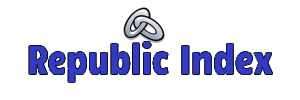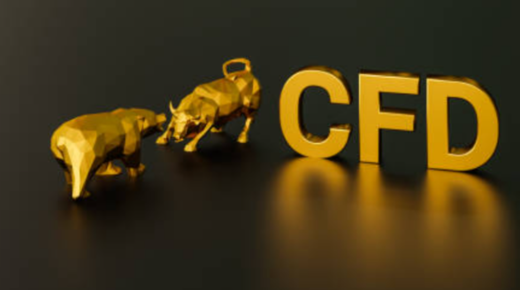Investments can be both thrilling and daunting, especially when it comes to commodities like gold. Gold has long been a symbol of wealth and stability, and with the advent of financial instruments like gold CFDs, investors now have a new way to tap into the potential of this precious metal. But what exactly are gold CFDs, and what do they mean for your investment portfolio? Let’s explore the risks and rewards of gold CFD investments in a casual and informative manner, without the rigid structure of formal headings.
Gold CFDs, or Contracts for Difference, are financial derivatives that allow investors to speculate on the price movement of gold without actually owning the physical asset. This might sound a bit abstract, but it’s actually quite straightforward. By trading gold CFDs, you’re essentially betting on whether the price of gold will go up or down. If your prediction is correct, you profit from the difference in price. If not, you face a loss. It’s a high-stakes game that can yield significant rewards, but it’s not without its risks.
One of the key attractions of gold cfd is the leverage they offer. Leverage is a financial term that refers to the ability to control a large amount of an asset with a relatively small amount of capital. This can amplify both your gains and your losses, making gold CFDs a double-edged sword. On one hand, you can potentially make substantial profits with a small investment. On the other hand, if the market moves against you, the losses can be just as magnified. Understanding and managing leverage is crucial for anyone considering gold CFD investments.
Another aspect to consider is the volatility of the gold market. Gold prices are influenced by a multitude of factors, including economic indicators, geopolitical events, and market sentiment. This can lead to significant price fluctuations, which can work in your favor if you’re a skilled trader who can navigate these changes. However, for less experienced investors, the volatility can be a source of anxiety and potential loss. It’s important to stay informed about global economic trends and to have a solid strategy in place when trading gold CFDs.
The cost of trading gold CFDs is another factor to keep in mind. Unlike physical gold investments, where you might pay for storage and insurance, trading CFDs involves dealing with spreads and overnight financing charges. Spreads are the difference between the buy and sell prices of a gold CFD, and they can eat into your profits if they’re too wide. Overnight financing charges, or ‘swaps’, are fees that you might incur if you hold a position open overnight. These costs can add up over time, so it’s essential to factor them into your trading strategy.
Now, let’s talk about the potential rewards of gold CFD (In Taiwan, it is called “黃金 cfd“) trading. Gold has historically been seen as a hedge against inflation and economic uncertainty. In times of market turmoil, investors often flock to gold as a safe haven, driving up its price. By trading gold CFDs, you can potentially capitalize on these market movements and make a profit. Additionally, gold can provide diversification benefits to your investment portfolio, as it often moves independently of other asset classes like stocks and bonds.
However, it’s not all sunshine and rainbows. The risks associated with gold CFD trading are significant and should not be overlooked. As mentioned earlier, leverage can work against you, leading to substantial losses. Additionally, the 24-hour nature of the gold market means that you need to be prepared to monitor your positions around the clock, which can be challenging for some investors. There’s also the risk of market gaps, where the price of gold can, leaving you with unexpected losses if you’re not prepared.
When it comes to managing these risks, education and experience are your best allies. Understanding the fundamentals of gold trading, as well as the mechanics of CFDs, is crucial. This includes knowing how to read gold charts, understanding technical indicators, and being aware of the factors that influence gold prices. Additionally, practicing with a demo account before diving into live trading can help you gain valuable experience and confidence.
One of the strategies that seasoned gold CFD traders use is to set stop-loss orders. A stop-loss order is a type of order that allows you to limit your losses by automatically closing your position if the price of gold moves against you by a certain amount. This can help you manage risk and protect your capital. However, it’s important to set these orders wisely, as setting them too close to the market price can result in being stopped out of a position prematurely.
Another strategy is to trade with the trend. Gold prices, like any other market, tend to move in trends. Identifying these trends and trading in the direction of the prevailing market sentiment can increase your chances of success. However, it’s also important to be aware of potential trend reversals and to have a plan in place to manage these situations.
Lastly, it’s worth mentioning the role of emotions in trading. Fear and greed can be powerful forces that drive market movements, but they can also lead to poor decision-making if not managed properly. It’s crucial to maintain a disciplined approach to trading, sticking to your strategy and not letting emotions dictate your actions. This can be especially challenging when trading gold CFDs, given the potential for large gains and losses.
In conclusion, gold CFDs offer a unique way to invest in gold, with both significant potential rewards and risks. By understanding the mechanics of trading, managing your leverage, and staying informed about market trends, you can potentially profit from the movement of gold prices. However, it’s important to approach gold CFD trading with caution, recognizing the risks involved and taking steps to manage them. As with any investment, success in gold CFD trading requires a combination of knowledge, experience, and discipline.

